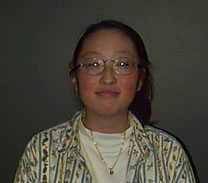
Mary Li-Min Chang
Genetic Modification of a Pre-mRNA Splicing Mutation Defect in Drosophila melanogaster
MENTOR: Dr. Stephen Mount, Department of Cell Biology and Molecular Genetics

| Mary Li-Min Chang |
In eukaryotes, messenger RNAs (mRNAs) are edited via splicing before translation occurs. Small nuclear RNAs (snRNAs) associate with specific polypeptides to create small nuclear ribonucleoproteins (snRNPs). These snRNPs come together to form a multi snRNP complex called the spliceosome, the machinery of pre-mRNA splicing. Each snRNP is believed to be involved in recognition of certain nucleic acid sequences, helping to anchor the complex to the pre-mRNA, and ultimately help mediate RNA splicing. The affinity for the snRNAs to bind to the proteins and how the complex ultimately comes together are of interest to researchers, as structure often determines function. Any alteration to the formation of the complex will no doubt have a dramatic effect on the patterns of splicing. If this mechanism and the effects of mutation can be understood, then we will be one step closer to understanding how and why diseases caused by incorrect splicing occur.
My project involves the study of the pre-mRNA splicing mechanism in
Drosophila melanogaster, the laboratory fruit fly. A mutagenesis
screen will be carried out with a Drosophila strain, of my own
creation, that has a mutant pre-mRNA splicing pattern. In this mutant,
splicing out of the second intron is greatly reduced, and I would like
to isolate modifiers of this gene I induce during mutagenesis. I will
screen for the mutants first in vivo by looking for dominant eye color
mutations, then isolate the mutation(s) by mapping the gene(s).
Finally the gene(s) can be sequenced, and assessed for their role in
affecting assembly of the spliceosome or suppression/activation of the
U1 snRNP. Hopefully it will be possible in the future to take what we
have learned about the genetics of the fruit fly, and apply our
knowledge to the study of human diseases caused by pre-mRNA splicing
defects to come up with more effective modes of treatment.

| Jeffrey Shupp Examination of Immunological Activity of Staphylococcal Enterotoxins that Function as Superantigens MENTOR: Dr. Carol Pontzer, Department of Cell Biology and Molecular Genetics |
Staphylococcal Enterotoxins (SE) are a potent class of molecules
produced by the organism Staphylococcus Aureus. SE are known to act on
host systems in three distinct ways: as enterotoxins, they induce
emesis and diarrhea; as exotoxins, they have been implicated in the
induction of toxic shock; and as superantigens (SAgs) they dramatically
affect the immune system resulting in immunosuppression. SE are known
to be the causative agents of common food poisoning
(staphyloenterotoxicosis) and can be particularly devastating to
individuals suffering from immune disorders such as Lupus or AIDS. We
are trying to better understand the mechanisms, which enable these
molecules to cross the intestinal walls and gain access to the systemic
and local immune system. We are specifically interested in the effects
of dose on over all immune response and molecule movement from the gut.

| Larry Edelman The Use of Fluorescence Resonance Energy Transfer to Assess the Looping Geometry of the DNA-LacI Complex MENTOR: Dr. Jason Kahn, Department of Chemistry and Biochemistry |
The processes of transcription initiation and regulation are
fundamental to all living organisms. These processes are highly
regulated, and they are controlled mainly by various DNA-binding
proteins that act as transcriptional activators and repressors. In the
Kahn Lab, our research is focused on the three-dimensional conformation
of DNA-Protein complexes involved in transcription regulation. One of
the best understood systems of transcription regulation is the lac
operon system found in the bacterium E.coli. As part of the
regulation, the repressor protein LacI binds to two different operator
sites on DNA causing the DNA to loop around the protein. Currently,
there are three proposed models for this looping where the DNA either
wraps away from the protein, towards the protein, or simply loops
around the protein. My goal is to utilize a method in fluorescence
spectroscopy, called Fluorescence Resonance Energy Transfer (FRET), to
measure the physical distance between the two operator sites on the DNA
when the LacI protein is bound. By detecting the amount of energy
transferred between a fluorescent donor and acceptor placed on opposite
operator sites of various DNA constructs the distance can be estimated.
Then, using this data we will be able to make qualitative predictions
regarding the looping of DNA around lac repressor in vitro.
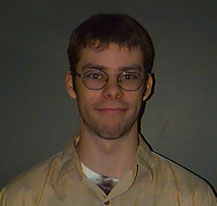
| Ernest Williams Ribulose 1,5 Bisphosphate Carboxylase/Oxygenase in Archaea and Eubacteria Shows Gene Diversity and Possible Horizontal Gene Transfer MENTOR: Dr. Charles Delwiche, Department of Cell Biology and Molecular Genetics |
Although the Rubisco gene has been used for phylogenetic analysis of embryophytes and cyanobacteria, previous studies have
shown discrepencies between ribosomal and Rubisco phylogenies for archaeal and bacterial species. Based on these data it is
our belief that Rubisco has a history of horizontal gene transfer. We used Polymerase Chain Reaction (PCR) to find novel
sequences from various eubacterial and archaeal species to further test this hypothesis. Organisms were chosen to represent
several proteobacterial and archaeal families. To date primers designed from nucleotide alignments of archaeal, eubacterial,
and dinoflagellate Rubisco genes have failed to provide discrete products. These primers did successfully produce discrete
products from dinoflagellate and soil isolated bacterial species with known Rubisco sequences. Initial phylogenetic analysis
of existing Rubisco genes using maximum likelihood and maximum likelihood distance with a general time reversible model shows
distinct separation between form I and form II and a separate intermediate placement of the archaeal species Pyrococcus abyssi.
Computer simulated PCR suggested that these primers would not generate satisfactory products with Pyrococcus abyssi. The
organisms chosen for this study were isolated from extreme environments similar to those in which Pyrococcus has been isolated.
Although we have produced sequences that are closely related to known sequences, we are continuing to try to generate genuinely
novel sequences.
| Ian D. Simon Manipulation of Virus Structures for the Assembly of Nanoparticles MENTOR: Dr. James N. Culver, Center for Agricultural Biotechnology |
In recent years, the field of nanotechnology has been expanding its resource base to include cooperative efforts with the fields of biology, chemistry, and virology. In particular, biological entities, such as viruses, have evolved complex assemblies of macromolecules that can potentially be used for the assembly of relevant nanoparticles. The unique structure and self-assembly of the Tobacco mosaic virus (TMV) make it an ideal template for the assembly wires, using soft metal ions.
Specific amino acids on the inner and outer portion of the protein subunit were identified as most likely to increase nanoparticle assembly once they were altered to increase surface charge affinity and hydrophobicity. Site-directed mutagenesis of the protein coding region of TMV was accomplished by a PCR-based method, using oligonucleotides that contained the desired mutations.
In the next phase of this project, the TMV particles will be incubated with gold, copper, silica, and other semiconductor
materials to determine the binding efficacy of the mutated particles. The long term goal of this research is to use
biomacromolecules to construct two and three dimensional nanocircuits for application in future computer chips and for
other micro-electric devices.

| Nicole Pavlos The Effect of Gamete Proximity on Fertilization Success in the Eastern Oyster, Crassostrea virginica MENTOR: Dr. Kennedy Paynter, Department of Biology |
Oysters, which reproduce externally by shedding their gametes into the water column, are naturally gregarious, typically settling in dense formations. As a result, spawning individuals in natural assemblages are close together, maximizing sperm-egg interactions. However, in Maryland many oyster bars are characterized by low-density distributions of spawning individuals - the result of harvest and planting practices. The fundamental notion of how distance between spawning individuals affects fertilization success has not been studied. If fertilization success is mostly related to chance oyster egg and sperm encounters these populations may be functionally sterile.
Fertilization success was measured as a function of distance: 10 cm, 50 cm and 116 cm, in tanks without flow. Approximately half a million eggs and one million sperm were dispensed simultaneously into the water at varying distance from one another. After two hours, each of the tanks was then separately drained through a ten micron mesh plankton net and eggs were collected into a 100 ml container. Six ml samples were preserved in 1 ml 10 % formalin, then surveyed for fertilization success under the compound microscope. Data collected showed a decrease in fertilization success with an increase in distance between male and female gametes.
In conclusion, oysters planted at high densities and protected from harvest or disturbance may be far more
functionally fertile than their counterparts spread apart by management efforts and fishing gear.
| Amy Jane Lin ISRGL a Nuclear Repressor of Gibberellin Hormone Response in Arabidopsis thaliana? MENTOR: Dr. Caren Chang, Department of Cell Biology and Molecular Genetics |
The agriculture industry has been using plant hormones such as gibberellic acid (GA) for many years to increase their crop yields. GA is known to play an important role in stem elongation, fruit production, seed germination, leaf size, and flowering. Little is known about the molecular mechanisms which control vital developmental processes in plants. So far, a handful of genes have been found to play a part in physiological responses to GA. The process from GA perception to GA responses is called the GA signal transduction pathway.
The purpose of this study is to determine whether the Arabidopsis thaliana RGL gene plays a role in GA signal transduction. It is hypothesized that this gene encodes a nuclear regulator based on its similarity to two known genes in the GA signaling pathway called GAI and RGA.To see how the plant would behave either without the gene or having a mutant form of the gene, transgenic plants with an antisense construct or a mutant forrn of RGL were created. Seedlings from these plants were grown with or without a GA biosynthetic inhibitor so that changes in the GA response could be detected. It was shown that antisense lines and co-suppressed lines of RGL had earlier flowering times than wild-type plants which supports the idea that RGL functions as a repressor in the GA signal transduction pathway instead of an activator.
To determine whether RGL protein localizes to the nucleus, RGL was attached to a green fluorescent protein which allowed the protein to be tracked visually in Arabidopsis thaliana. From data collected, it is seen that RGL does target the fluorescent protein into the nucleus thus supporting the idea that RGLis a nuclear regulator.
Our findings suggest that RGLis a part of the GA signal transduction pathway by
working as a repressor in the nucleus, similar to other genes in the pathway. Overall, this
will give a more comprehensive map for the entire process.

| Sarah Evelyn Beck Use of Genetic Markers to determine the phylogenic relationship between the North Atlantic and North Pacific populations of E. glacialis MENTOR: Dr. Matthew Parsons Hare, Department of Biology |

| William Michael Seganish Preparation and Characterization of Chiral Bis-sulfoxide Ligands MENTOR: Dr. Daniel Evans, Department of Chemistry and Biochemistry |

| Matthew R. Weaver Effects of Host Dispersal Capability on the Genetic Structure of Parasite Populations MENTOR: Dr. Robert F. Denno, Department of Entomology |

| Michael Nguyen Effect of Glandular-Haired Clones of Alfalfa on an Insect Herbivore MENTOR: Dr. William Lamp, Department of Entomology |

| Alma Cano-Arnold Characterization of Rubricine and its components for genetic toxicity MENTOR: Dr. Spencer Benson, Department of Cell Biology and Molecular Genetics |

| Laura A. Cathcart Goosecoid (gsc) Gene Expression in Cavefish MENTOR: Dr. William Jeffery, Department of Biology |

| Stacey R. Davis Plant Resource Allocation and Herbivory for H. quinquenervis over an Altitudinal Gradient MENTOR: Dr. David Inouye, Department of Behavior, Ecology, Evolution, and Systematics |

| Daniel Joseph Adams Preparation of an in vitro Model System for Studying Replication of Human Immunodeficiency Virus MENTOR: Dr. Jeffrey DeStefano, Department of Cell Biology and Molecular Genetics |

| Elke K. Chen Patterns of Translation During Spermiogenesis in Marsilea vestita MENTOR: Dr. Stephen Wolniak, Department of Cell Biology and Molecular Genetics |

| Erin Boden Use of a Novel Chromatin Cross-Linking and Purification Method to Analyze the in vivo DNA-Binding and Activity of a Xenobotic Stress-Activated Plant Transcription Factor MENTOR: Dr. Jonathan Arias, Department of Chemistry and Biochemistry |

| Kristen Frankenfield Enhancing Selectivity of DNA Alkylating Reagents MENTOR: Dr. Steven Rokita, Department of Chemistry and Biochemstry |

| Marie A. Ofori Hydrophobic Self Assembly of Organic Molecules In Water MENTOR: Dr. Lyle Isaacs, Department of Chemistry and Biochemistry |
Derivatives of glycoluril are have been found to be good building blocks for molecular self-assembly (Rebek,
J. Jr. Chem Rev. 1997, 97, 1647-1668 ) (Nolte, R. J.M. Acc. Chem.Res 1999, 995-1006). This research has
been inspired by the self-assembly of biological molecules under the hydrophobic effect. Examples are the
phospholipid bilayer of cell membranes, the DNA double helix, and the precise 3-D structure of folded proteins.
The hypothesis is that aggregates of these glycoluril derivatives will self-assemble under the hydrophobic
effect. The aim of the Isaacs group is to gain a further understanding of the hydrophobic effect at the
organic level, and be able to utilize it for biological purposes. Below is a chem-draw representation of the
glycoluril derivative that is currently under study.
| Kelly Erin Riordan Analysis of Differential Protein Expression in Drug Sensitive and Drug Resistant Human Breast Cancer Cells MENTOR: Dr. Catherine Fenselau, Department of Chemistry and Biochemistry |
| Ibironke Oduyebo Synthesis of Artificial Metalloenzymes MENTOR: Dr. Bryan Eichorn, Department of Chemistry and Biochemistry |
Asymmetnc Induction is the process by which ligands with chiral pockets are synthesized and are used to induce chirality in different substances. The proposed research involves the synthesis of ligands with chiral pockets. The ligands to be synthesized will be tris(pyrazolyl) borate (Tp) ligands. These Tp ligands will be made up of three groups 3-ethyl ethanoate pyrazole attached to an element of Boron. These ligands will have a transition metal ion placed in a pocket found in the middle of the ligands. In an attempt to rnimic the topology of enzymes in our body, the Tp ligands will have different polypeptides attached to the pyrazole components of the ligands (Fig l).

| Ngozi Nnennanya Ude Origin of Regenerated Serotonin Fibers in Spinal Cord of Lampreys MENTOR: Dr. Avis Cohen, Department of Biology |
Lamprey is a primitive vertebrate which is capable of regenerating its spinal fibers. We
are specifically interested in the regeneration of serotonin fibers which have previously been
investigated in the Cohen laboratory. Serotonin is a neurotransmitter which acts at synapse
between neuronal cells. The purpose of this experiment is to discover the origin of the regenerated
serotonin fibers and the amount of descending serotonin fibers from the brain. In lampreys there
are two possible sources of serotonin fibers, the brain or the spinal cord or both. The
hypothesis states that regenerated serotonin fibers originate from the brain. To test this
hypothesis, a mid body spinal crush will first be made in a lamprey. After degeneration and
regeneration of serotonin fibers have been observed following the lesion site, a transection (cut)
will be made in the spinal cord close to the brain. If this results in a disappearance of
serotonin fibers, then it will be concluded that regenerated serotonin fibers originate from
the brain. However, if the serotonin fibers are not affected by the second lesion, then this will
imply that the regenerative serotonin fibers do not originate from the brain, but from the rostral
segment of the spinal cord.
| Janina Kaczmarczyk Structural Determinants of a Biological Switch MENTOR: Dr. Dorothy Beckett, Department of Chemistry and Biochemistry |
| Fasika Woreta The Roles of VEGFR-1 and VEGFR-2 in the Internalization and Subsequent Transport of VEGF(6) in HUVECs MENTOR: Dr. Ibrahim Ades, Department of Cell Biology and Molecular Genetics |

| Roya Saffary Analysis of Supportive Cues in Collapse-Induced Branching and Defasiculation MENTOR: Dr. Roger W. Davenport, Department of Biology |
| Alexander Rzasa Conductance Velocities in the Bilateral Projections of the Nucleus Magnocellularis and their Relationship to the Jeffress Coincidence Detecting Model MENTOR: Dr. Catherine Carr, Department of Biology |

| Matilda Hagan Determining the Origin of the Regenerated Serotonin Fibers in the Lamprey Spinal Cord MENTOR: Dr. Avis Cohen, Department of Zoology |
The lamprey is a small aquatic vertebrate whose central nervous system consists of fewer neurons
than other vertebrates, which makes the lamprey an ideal model to study the neural basis of the
complex operations of the central nervous system. Studies of the lamprey spinal cord have revealed
that after spinal injury, serotonin containing neurons regenerate. Further research has
demonstrated that change in temperature affects the functional outcome of regeneration
(Cohen et al 1999). Animals who recover in warm conditions appear to have a higher functionality
rate than animals that revive under cold conditions which is similar to their natural habitat.
Preliminary work in the Cohen lab has showed that animals that recover under cold conditions
appear to regenerate patchy serotonin distribution in contrast to animals that recuperate under
warm conditions, which revive uniform distribution of serotonin fibers. Serotonin is known to slow
down locomotion suggesting that there might be a correlation between the observed serotonin fibers
and functional outcome of regeneration following spinal injury. The main point of interest is the
observed serotonin fibers. Studies have showed serotonin fibers to disappear after spinal injury,
then reappear. More fascinating is that the serotonin fibers in the most rostral caudal segment
seem to increase following regeneration. The origin of these fibers is unclear, however it is known
that the intrinsic serotonin fibers in the spinal cord do not regenerate. I propose to investigate
the serotonin fiber distribution following a mid-body spinal crush and a high lesion that
disconnects the brain from the spinal cord in animals that recuperate under cold conditions. I
hypothesize that the observed increase in serotonin fibers originates from the brain and predict
that the serotonin levels will decrease following the high lesion.
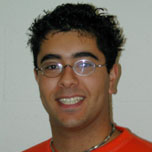
| Soroush Rais-Bahrami Linkage Disequilibrium in Colorado Potato Beetles MENTOR: Dr. David J. Hawthorne, Department of Entomology |

| Jill Marie Ricker Tracing the Evolutionary History of tufA in Coleochaete MENTOR: Dr. Charles F. Delwiche, Department of Cell Biology and Molecular Genetics |

| Tinsay Woreta Determination of the Essential Nature and Possible Function of Two Genes in Isoprenoid Biosynthesis in a Photosynthetic Cyanobacterium MENTOR: Dr. Elisabeth Gantt, Department of Cell Biology and Molecular Genetics |

| Clint Oommen Synthesis of Artificial Metalloenzyme MENTOR: Dr. Bryan Eichorn, Department of Chemistry and Biochemistry |
| Vyacheslav Gendel The Role of the c-Terminus Domain in the Gating Mechanism of the Large Mechanosensitive Channel, MscL MENTOR: Dr. Sergei Sukharev, Department of Biology |
| Dan Kunaprayoon Effects of Peripheral Oxytocin on c-Fos Expression MENTOR: Dr. Bruce Cushing, Department of Biology |
| Stephen W. Snyder Molecular Phylogeny of Various Species of Klebsormidium MENTOR: Dr. Charles F. Delwiche, Department of Cell Biology and Molecular Genetics |
| Emily Payne Flourescent Biosensors for Carbohydrate Metabolism MENTOR: Dr. Phil DeShong, Department of Chemistry and Biochemistry |
We are working to develop a doubly-labeled fluorescent carbohydrate biosensor. The target molecule is an oligosaccharide labeled at each end with a specific fluorescent group. Employing the phenomenon of fluorescence resonance energy transfer (FRET), will allow this compound to function as a biosensor. When the entire molecule is intact, the FRET will occur, but when the glycosidic linkage present in the molecule has been cleaved, as happens when digested by a bacteria, the FRET phenomenon is no longer observable. Thus, detection of bacteria in water or food supplies is possible.
Synthesis of the target biosensor is currently underway. Two singly labeled halves of the molecule have been
synthesized, and coupling paths are being investigated. Additionally, synthesis of a doubly-labeled monosaccharide is
also being conducted for the purpose of determining if the fluorophore-saccharide linkages are robust. This second
synthesis is the focus of my primary efforts in the DeShong group.
| Anoma Nellore Characterization of Effector and Memory T-Cells on the Basis of Telomere Length MENTOR: Dr. Donna Farber, Department of Cell Biology and Molecular Genetics |
The immune system protects the body from previously encountered pathogens through a memory
response. This response is mediated by memory CD4 T lymphocytes. There are two models, which
explain the origins of memory CD4 T lymphocytes (3). The widely accepted model states that memory
CD4 T lymphocytes arise from effector T lymphocytes, which, in turn, arise from naive CD4 T cells.
A second model proposes that naive CD4T cells give rise to both memory and effector T cells. The
validity of these models will be tested by comparing the lengths of DNA caps on the chromosomes of
effector and memory T cells. These caps are called telomeres.
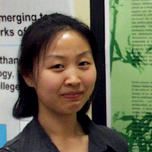
| Chi S. Chae Antimicrobial Activity of Chinese Herbal Root Extract Rubricine On Bacillus subtilis MENTOR: Dr. Spencer Benson, Department of Cell Biology and Molecular Genetics |
Herbs and their extracts have been used for medicinal purposes for centuries in Traditional Chinese Medicine
(TCM). Herbalists and TCM practitioners are well aware of the increased effectiveness of appropriate combination
of compounds over single compounds. A fundamental premise that underlies nearly all herbal medicine approaches
is that combinations of agents act synergistically to enhance biological activities and/or reduce undesirable side
effects. As the legacy of eastern herbal medicine has gradually made its way into the western world, the interest
in the usage of natural products has increased. Consequently, the use of herbal supplements is likely to continue
to increase in the future. Clearly, a better understanding of the activities, mechanisms of action and
interactions that occur within and among herbal combinations is required for safer use in this art of TCM. Root
extract from Arbenia euchroma, called, rubricine, has been widely used as wound healing, anti-inflammatory, and
anti-microbial agents in TCM. The extract contains six structurally related naphthoquinoline compounds that are
derivatives of shikonin. o understand the medicinal activity of rubricine as an anti-microbial agent, a simple
disc sensitivity test is used which allows rapid and easy assay of anti-bacterial activities. Using Bacillus
subtilis as the test organism, I have shown that all six compounds have similar antibacterial activity and
are effective antibacterial agents. I have demonstrated that two-fold combinations are significantly more active
than the additive effect of two individual compounds. Using pair-wise combinations, I have shown that shikonin
is synergistic with each of the other five compounds present in rubricine but not vise versa.
| Raymond Cheong Computer Simulation of LacI-Induced DNA Loops MENTOR: Dr. Jason Kahn, Department of Chemistry and Biochemistry |
DNA loops are structures fundamental to gene regulation. For example, loops can enhance the ability of
repressors to bind DNA, thereby preventing expression of certain genes. This project aims to develop a
theoretical model to describe the shape of DNA loops formed by the LacI repressor protein. The model has three
key aspects. First, the model uses Monte Carlo methods to generate and filter DNA with random shapes, from which
statistics on ring closure probabilities are collected. Second, it assumes that LacI possesses tertiary structure
flexibility, allowing LacI dimers within a tetramer to hinge open and close. Third, LacI binding to operators
imposes a geometric constraint on DNA, causing loop formation. Based on these principles, the shape of three
designed DNA molecules were simulated. These molecules contain operators oriented in different directions and
A-tracts that provide an inherent bend to assist loop formation. Dozens of simulations were run for each molecule,
representing different combinations of hinge angle, operator direction, and inner/outer loop; the results were
then mathematically combined. Currently, the model duplicates the experimental observations that different
topoisomers form and that the molecules' J factors (which reflect thermodynamic stability of loops) do not vary
much. However, the model generates more topoisomers (loops with different topologies) than are actually formed
and the predicted J factors are 10-100 times too large. Future work will focus on adjusting model parameters to
improve the match with experiment. Then, useful predictions can be extracted from the model, which for example,
can be used in the rational design of large LacIáDNA nanostructures

| Elizabeth M. Flynn The Effect of Shell Assemblages on Fish Habitat Selection MENTOR: Dr. Kennedy Paynter, Marine Estuarine-Environmental Sciences |
Oysters and oyster reefs are key subsystems within the Chesapeake Bay estuary that affect a large number of ecological processes. Over the past 150 years, overfishing, pollution, and disease have decimated the indigenous Bay populations destroying valuable reef habitat. Reefs are much more than simple piles of oyster shell. They serve as shelters, nurseries and foraging grounds for fish species. To maximize the effectiveness of restoration efforts, it is important to understand the relationship between reef structure and fish abundance.
Five species of estuarine fish were observed in trials testing habitat choice. The species included were blennies (striped Chasmodes bosquianus and feathered Hypsoblennius hentzi), naked gobies (Gobiosoma bosci), mummichogs (Fundulus heteroclitus) and skilletfish (Gobiesox strumosis). In the lab, three covered 55-gallon aquariums were arranged as follows: Tank A held F. heteroclitus and G. strumosus, tank B held G. bosci, and the two blenny species were held in tank C. Glass plates measuring 20 x 35 cm were mounted with configurations of natural, clean oyster shell and lowered into the aquariums. Fish were introduced and allowed to settle over one of two distinct treatments; natural clumped formations or piled loose shells. After one hour, a fine-gauge net was lowered to prevent further movement between treatments. Fish number and location were counted and recorded by species. Results indicate that these species display a strong affinity for natural clumps of oyster shell as compared to equivalent piles of loose shell.
The results of this study help clarify the importance of structural features of oyster reefs in fish habitat
selection, an important concern in artificial reef construction. Combined with further investigations of water
flow, sedimentation, and fouling communities, this knowledge will contribute to the continuing reef restoration
efforts in the Bay.
| Alanna Kim Growth Hormone Effects on Oscars Inner Ear Hair Cell Differentiation MENTOR: Dr. Joelle Presson, Department of Biology |
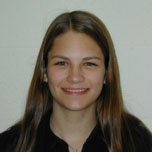
| Katherine Jean Kayser Iron-Sulfur Complexes and the Formation of a Thio-Guanosine Quartet MENTOR: Dr. Jeffery Davis, Department of Chemistry and Biochemistry |
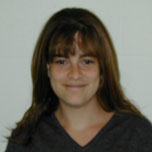
| Margaret Pancost Intramolecular Hydroacylation Extended to the Cascade Synthesis of Multicarbocyclic Ketones MENTOR: Dr. Andrew T. Morehead, Jr., Department of Chemistry & Biochemistry |

| Naser Jaleel Analysis of Structure-Function Relationships in Ornithine Transcarbamylase MENTOR: Dr. Norma Allewell, Department of Chemistry and Biochemistry |
| Theresa Katherine Jackson Nickel-Induced Nucleosome Modification MENTOR: Dr. Steven Rokita, Department of Chemistry and Biochemistry |
| Daniel Paluchowski Ion-ion Exchange in Layered Oxides MENTOR: Dr. Bryan Eichorn, Department of Chemistry and Biochemistry |

| Mani Dana Khan Environmental History of the Chesapeake Bay Reconstructed from Sediment Chemistry Dr. George Helz, Department of Chemistry and Biochemistry |

| Tracy L. Murray Molecular Modeling and Visualization Software in Organic Chemistry Education MENTOR: Dr. Bruce Jarvis, Department of Chemistry and Biochemistry |
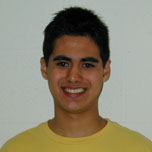
| Christian Reusche The Primary Cell of Dicotyledonous Plants MENTOR: Dr. Elena del Campillo, Department of Cell Biology and Molecular Genetics |

| Esteban Carrizosa Analysis of Spontaneous Mutation Frequencies in Neisseria gonorrhoea MENTOR: Dr. Daniel C. Stein, Department of Cell Biology and Molecular Genetics |

| Nana Benneh Cis Sequence Requirement for Hermes in Drosophila melanogaster MENTOR: Dr. David O'Brochta, Center for Agricultural Biotechnology |
| Nanna Ordibehesht Ariaban Double Stranded RNA Inhibition of Gene Function MENTOR: Dr. Paul Bottino, Department of Cell Biology and Molecular Genetics |
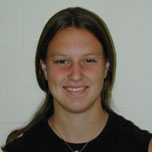
| Natalie Dye Identification Of Exonic Splicing Enhancers in Arabidopsisthaliana MENTOR: Dr. Stephen Mount, Department of Cell Biology and Molecular Genetics |
| Brent Becker Optimizing the Reversal of LPS Toxicity Through Macrophage Fcy Receptor Types and IgG Isotypes MENTOR: Dr. David Mosser, Department of Cell Biology and Molecular Genetics |
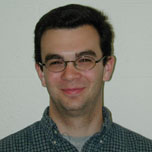
| Brian Snyder The Effects of Growth Hormone on Supporting Cell Proliferation in the Ear of Hatchling Chicks MENTOR: Dr. Joelle Presson, Department of Biology |

| Dena Chahal Cellulases in Arabidopsis Flower Abscission MENTOR: Dr. Elena del Campillo, Department of Cell Biology and Molecular Genetics |
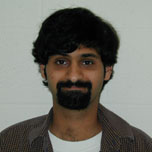
| Salah Al-Abbadi Dissociation and Patch Clamping of Lateral Photoreceptor Cells of the Horseshoe Crab Limulus polyphemus MENTOR: Dr. Richard Payne, Department of Biology |
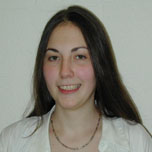
| Yana Tsygansky The Role of Gap Junctions in the Development of the Auditory System MENTOR: Dr. Catheri ne Carr, Department of Biology |
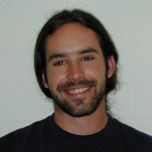
| Carl R. Eby III Biological Control of Stylochus ellipticus MENTOR: Dr. Kennedy Paynter, Department of Biology |
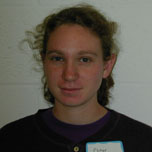
| Elinor Lichtenberg Vibration Signaling in Stalk-Eyed Flies MENTOR: Dr. Gerald Wilkinson, Department of Biology |

| Jessica Nelson Culural Management of Abacarus Hystrix on Timothy MENTOR: Dr. Galen Dively, Department of Entomology |
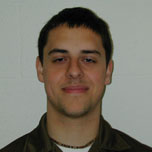
| Mario Muscedere Behavior, Morphology and Differentiation of Reproductive Soldiers in Young Dampwood Termite Colonies MENTOR: Dr. Barbara Thorne, Department of Entomology |
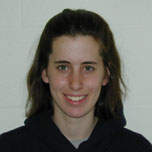
| Margaret Cunningham Molecular Adsorption at Solid-Liquid Interfaces MENTOR: Dr. Robert Walker, Department of Chemistry and Biochemistry |
| Payal Razdan Hair Cell Damage and Regeneration in the Ear MENTOR: Dr. Arthur Popper, Department of Biology |